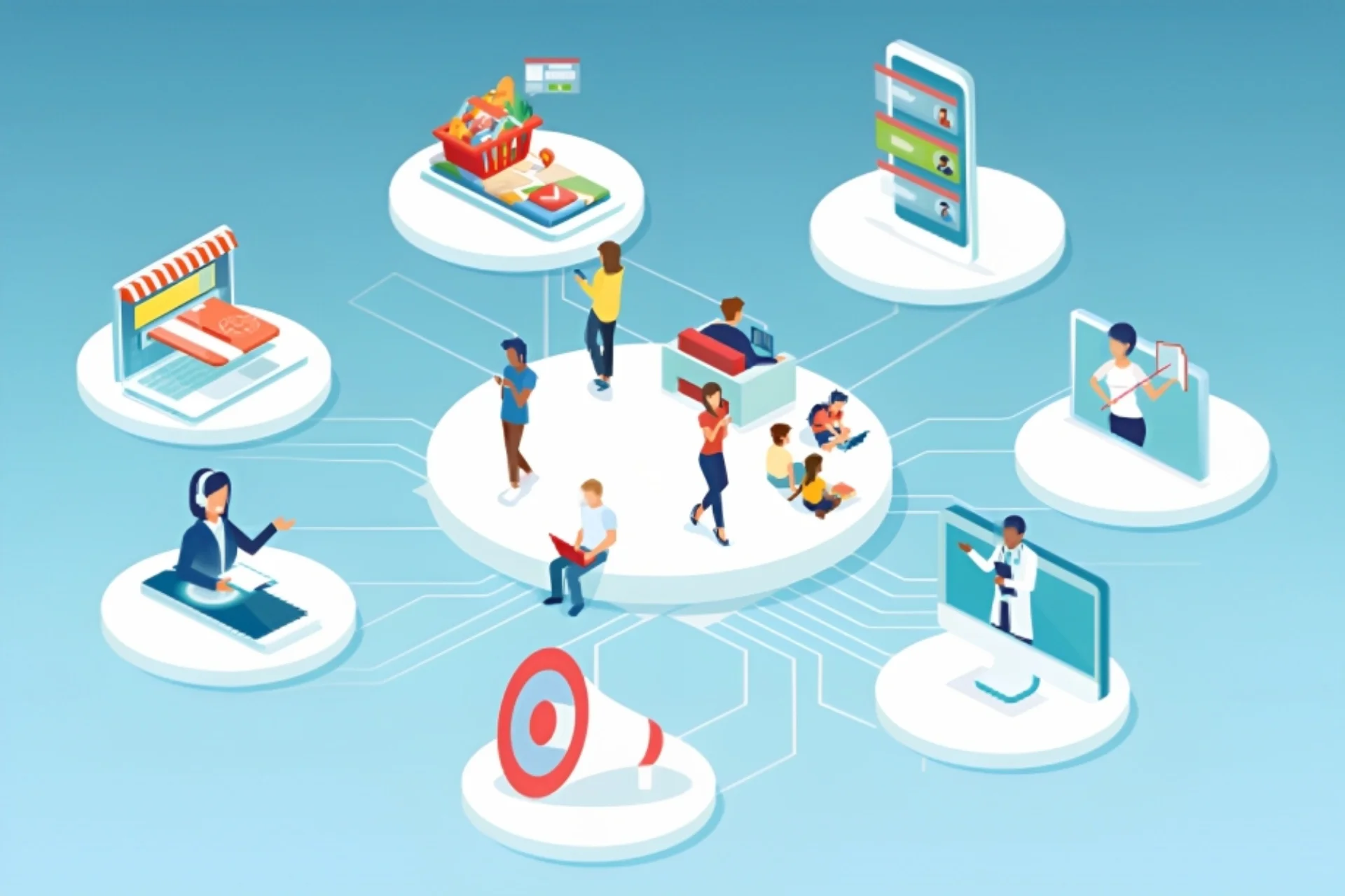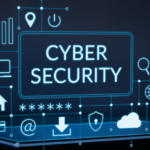The Top 10 IT Trends to Watch in 2023
In today’s rapidly evolving world, technology continues to play a pivotal role in shaping various industries and revolutionizing the way we live and work. As we step into 2023, it’s essential to stay informed about the latest IT trends that have the potential to reshape businesses, drive innovation, and enhance efficiency. In this article, we will delve into the top 10 IT trends to watch in 2023, highlighting their significance, benefits, and potential impact on industries across the globe.

Artificial Intelligence (AI) – Transforming Industries
Artificial Intelligence, or AI, continues to be at the forefront of technological advancements. With its ability to analyze vast amounts of data, AI empowers businesses to gain valuable insights and IT Trends make informed decisions. In 2023, AI is expected to expand its reach, transforming various industries such as healthcare, finance, manufacturing, and retail.
AI is revolutionizing the financial sector by streamlining operations, reducing costs, and enhancing security. Automated systems powered by AI can analyze financial data, detect anomalies, and identify potential risks, enabling faster and more accurate decision-making. Chatbots are transforming customer service by providing instant support, answering queries, and facilitating transactions. AI algorithms also play a significant role in fraud detection, ensuring robust security measures to protect customers’ financial data.
The manufacturing industry has witnessed a significant transformation with the integration of AI. Intelligent robots and automation systems are optimizing production processes, improving efficiency, and IT Trends reducing human error. AI-powered predictive maintenance systems analyze real-time data from sensors, detecting potential equipment failures and enabling proactive maintenance. This approach minimizes downtime, saves costs, and ensures seamless production.
Internet of Something (IoT) – Linking the World
The Internet of Things (IoT) has gained immense popularity in recent years, and its influence will continue to grow in 2023. IoT guides the network of connected devices and things that collect and trade data. With the increasing adoption of smart devices, IoT has the potential to revolutionize industries such as agriculture, IT Trends transportation, and energy management, enabling efficient and automated processes.
The growth of IoT has been exponential, with billions of devices already connected and projections of even larger numbers shortly. The advancements in technology, such as miniaturization, wireless communication, and cloud computing, have played a vital role in fueling this growth. From smart thermostats and energy management systems to autonomous vehicles IT Trends and industrial monitoring, IoT applications span numerous industries, promising enhanced convenience, productivity, and sustainability.
IoT has seamlessly integrated into our everyday lives, simplifying tasks and providing new experiences. Smart homes, for instance, enable us to control and monitor various aspects remotely, from adjusting the temperature and lighting to managing security systems. Wearable devices have become increasingly popular, helping individuals track their fitness goals, monitor health parameters, and receive personalized IT Trends recommendations. IoT also extends to transportation, with connected cars improving safety and efficiency through features like GPS navigation and real-time diagnostics.
Edge Computing – Powering Real-Time Data Processing
Edge computing, a decentralized computing infrastructure, is set to play a vital role in 2023. With the proliferation of IoT devices and the need for real-time data processing, edge computing brings computation and data storage closer to the source, reducing latency and improving efficiency. This IT Trends will be particularly significant in industries that require instantaneous data analysis, such as autonomous vehicles, healthcare, and smart cities.
With edge computing, data processing happens near the devices generating the data. This proximity reduces the time taken for data to travel to remote servers and back, resulting in significantly lower latency. This improved performance is crucial for time-sensitive applications that require an instant response, such as autonomous vehicles, industrial automation, and real-time monitoring systems.
By performing data processing tasks at the edge, edge computing reduces the amount of data that needs to be transmitted to the cloud for analysis. This optimization minimizes bandwidth consumption and eases the strain on network infrastructure. IT Trends becomes especially advantageous in scenarios where bandwidth availability is limited or costly, ensuring efficient utilization of network resources.
5G Technology – Unleashing the Power of Connectivity
The arrival of 5G technology promises to revolutionize connectivity and unlock new possibilities in various sectors. With its ultra-fast speeds and low latency, 5G will enable real-time communication, enhance mobile experiences, and support the development of emerging technologies like autonomous vehicles and remote healthcare. In 2023, we can expect 5G to pave the way for a more connected and digitally-driven world.
Latency refers to the time it takes for data to travel from its source to its destination and back. 5G technology significantly reduces latency, with response times as low as 1 millisecond (ms). This near-instantaneous responsiveness is important for applications that need a real-time exchange, such as autonomous cars, remote surgery, and immersive extended-reality incidents.
With the exponential growth of connected devices, 5G is designed to support a massive number of simultaneous connections. Unlike previous generations, which primarily focused on mobile devices, 5G networks can connect a wide range of devices, including IoT sensors, smart appliances, wearables, and industrial machinery. This capability paves the way for the development of smart cities, intelligent transportation systems, and advanced industrial automation.
Cybersecurity – Protecting Digital Assets
In an increasingly digital terrain, the extent of cybersecurity cannot be overstated. As technology advancements, so do the hazards posed by cybercriminals. In 2023, cybersecurity will be a top priority for organizations, governments, and individuals alike. With the rising adoption of AI-powered security solutions, machine learning algorithms, and advanced encryption techniques, businesses will strive to safeguard their digital assets and protect sensitive information from evolving cyber threats.
Effective access control measures ensure that only authorized individuals or systems have access to specific resources, data, or functionalities. This includes strong authentication mechanisms such as passwords, multi-factor authentication, and biometric authentication. Role-based access control (RBAC) and least privilege principles limit user privileges and minimize the potential impact of insider threats.
Quantum Computing – Revolutionizing Data Processing
Quantum computing, a nascent technology, holds the potential to revolutionize data processing and computational capabilities. IT Trends Unlike traditional computing, quantum computers leverage the principles of quantum mechanics to perform complex calculations at an unprecedented speed. Although still in its early stages, quantum computing is anticipated to make significant strides in 2023, paving the way for breakthroughs in fields such as drug discovery, weather forecasting, and optimization problems.
Augmented Reality (AR) and Virtual Reality (VR) – Enhancing User Experiences
Augmented Reality (AR) and Virtual Reality (VR) technologies have gained considerable traction in recent years, transforming the way we interact with digital content and blurring the line between the physical and virtual worlds. In 2023, AR and VR will continue to make waves in industries such as gaming, entertainment, healthcare, and education, offering immersive and engaging experiences to users.
Blockchain Technology – Enhancing Security and Transparency
Blockchain technology, originally introduced as the underlying technology behind cryptocurrencies, has evolved beyond its initial application. In 2023, IT Trends blockchain will continue to gain prominence as businesses recognize its potential to enhance security, transparency, and traceability. Industries such as finance, supply chain management, and healthcare can leverage blockchain to streamline processes, reduce fraud, and ensure the integrity of digital transactions.
Robotic Process Automation (RPA) – Streamlining Workflows
Robotic Process Automation (RPA) involves the use of software robots or “bots” to automate repetitive and rule-based tasks. By freeing up human resources from mundane activities, RPA enables organizations to optimize workflows, increase productivity, and reduce errors. In 2023, RPA will witness widespread adoption across industries, empowering businesses to focus on more strategic initiatives and deliver enhanced customer experiences.
Hybrid Cloud Solutions – Bridging the Gap Between On-Premises and Cloud
As cloud computing continues to evolve, hybrid cloud solutions will gain prominence in 2023. IT Trends A hybrid cloud combines the benefits of public and private clouds, allowing organizations to optimize their IT infrastructure and seamlessly manage workloads across multiple environments. With hybrid cloud solutions, businesses can strike a balance between on-premises systems and the scalability and flexibility offered by the cloud, enabling them to meet dynamic business demands effectively.
Hybrid cloud solutions are ideal for data backup and disaster recovery (DR). Organizations can replicate critical data and applications to the public cloud for off-site storage and redundancy. In the event of a disaster, data can be quickly restored from the cloud, ensuring business continuity and minimizing downtime.
A hybrid cloud allows organizations to handle sudden spikes in demand by leveraging the scalability of the public cloud. During periods of high traffic or increased computing requirements, additional resources can be seamlessly provisioned from the public cloud, ensuring optimal performance without overburdening on-premises infrastructure.
Conclusion
In conclusion, the year 2023 promises to be an exciting time for technology enthusiasts and businesses alike. The top 10 IT trends discussed in this article, including Artificial Intelligence, Internet of Things, Edge Computing, 5G Technology, Cybersecurity, Quantum Computing, Augmented Reality, Blockchain Technology, Robotic Process Automation, and Hybrid Cloud Solutions, are set to revolutionize industries, drive innovation, and transform the way we live and work.
By staying informed and embracing these emerging technologies, businesses can position themselves at the forefront of digital transformation, gain a competitive edge, and adapt to the evolving needs of the modern world. As we embark on this journey of technological advancement, it is crucial to remain agile, explore new possibilities, and harness the power of innovation to thrive in an ever-changing digital landscape.


